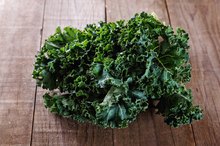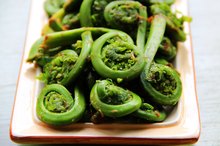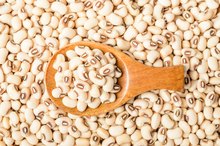How to Keep and Store Watercress
Watercress is a semi-aquatic plant often used in salads, wraps or as an edible garnish 2. The small, peppery-flavored leaves are a good source of antioxidants and contain iron, folic acid and vitamins C and A. Store watercress properly to keep it crisp and fresh and to minimize loss of flavor and nutrients 2.
Selecting Watercress
The better the quality of the watercress to start with, the longer the freshness can be maintained 2. Select bunches that show no signs of wilting, and avoid those with bruised, torn leaves or crushed stems. Watercress has a bright green color and firm stems at its peak 2. The leaves begin to darken and the stems become limp as it declines. A slimy texture on the leaves or stems indicates that the leaves are beginning to spoil.
Storage Preparation
How to Cook Watercress
Learn More
A few bruised or inferior leaves usually make it into the bunch since watercress is typically sold in hard-to-sort-through bundles 2. Examine the leaves prior to storage, removing any that are discolored or limp. Rinse the watercress briefly in water to remove any soil and contaminants before storage, and dry the leaves thoroughly to prevent quick decline in the refrigerator 2.
Crisper Storage
The vegetable crisper drawer provides an optimum storage area for watercress and other leafy greens, as high humidity may cause watercress to wilt or spoil prematurely 2. Leave the bag slightly open to allow any residual moisture to escape. The towels absorb excess liquid while leaving the bag slightly open allows any residual moisture to escape. Storing the watercress in this fashion will allow it to maintain its quality for about three days 2.
Water Storage
Things That Can Be Dehydrated in a Dehydrator
Learn More
Watercress also benefits from storage in water 2. While the leaves do best when kept dry, the stems remain firm if allowed to take in water during storage. Store your watercress in a glass of water to extend the storage time for up to five days, recommends bonappetit.com 2. Submerge only the stems in water, with the leaves loosely covered with a plastic bag. Replace the water daily or if it begins to discolor.
Related Articles
References
- Texas A&M University: Watercress
- Bon Appetit: Watercress
- Watercress, raw. FoodData Central. U.S. Department of Agriculture. Published April 1, 2019.
- National Institutes of Health Office of Dietary Supplements. Vitamin A: Fact sheet for health professionals. Updated February 14, 2020.
- Champagne CM, Broyles ST, Moran LD, et al. Dietary intakes associated with successful weight loss and maintenance during the Weight Loss Maintenance trial. J Am Diet Assoc. 2011;111(12):1826-35. doi:10.1016/j.jada.2011.09.014
- Yan L. Dark Green Leafy Vegetables. U.S. Department of Agriculture. Updated 2016.
- National Institutes of Health Office of Dietary Supplements. Vitamin K: Fact sheet for health professionals. Updated June 3, 2020.
- Food Allergy. American College of Allergy Asthma, & Immunology. Updated 2014.
- Watercress: Kale's Underused Cousin. Berkeley Wellness. Updated 2016.
- Newgent J. Washing Leafy Greens. Academy of Nutrition and Dietetics. Updated 2018.
Writer Bio
Jenny Harrington has been a freelance writer since 2006. Her published articles have appeared in various print and online publications. Previously, she owned her own business, selling handmade items online, wholesale and at crafts fairs. Harrington's specialties include small business information, crafting, decorating and gardening.









